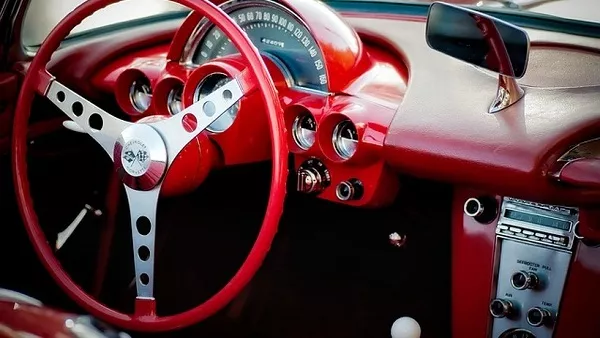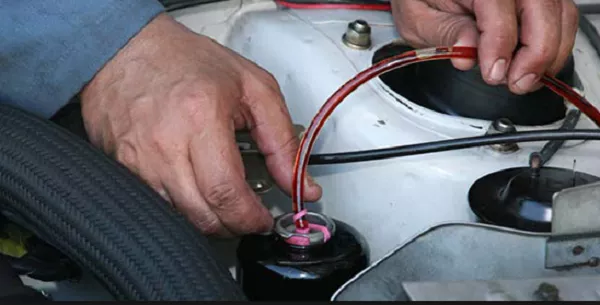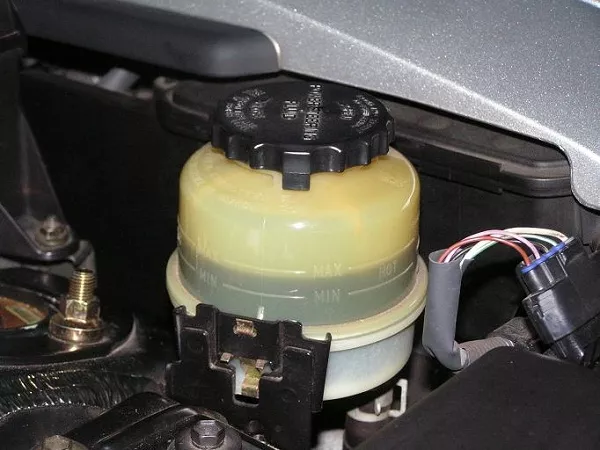Power steering is one of the modern conveniences that we should be thankful for, as it reduces the necessary effort in turning the steering wheel as we maneuver the car. Not only does this make the car more fuel-efficient, but it also results in an enjoyable drive overall.
Although electric power-assisted steering is fast becoming a standard feature on new car models, many vehicles on the road today are likely still using a hydraulic power steering setup.
And like most other things that are used frequently, your car’s hydraulic power steering will soon show signs of problems, whether it’s unnatural noises it makes each time you turn the wheel or the increased difficulty in controlling it.

The wheel in a power steering system should be quiet and easily controlled.
Although there are a number of reasons why it happens, one of the most common is the presence of air, which is not ideal in a system that uses hydraulic pressure. You will need to remove that air pocket to restore the power steering’s efficiency.
Fortunately, you can flush and bleed power steering systems by yourself, and this step-by-step guide brought by Philkotse.com will show you how.
I. Important things to consider before flushing and bleeding power steering systems
Before proceeding, you’ll need to make sure that the problem really is caused by the presence of air pockets. Here are some things you should keep in mind:
1. The Sound
One of the signs that there is your steering system has a problem is when you here a sound coming from the hood once you move the steering wheel. According to experts, the sound is similar to the sound of a disgruntled cat.
Another characteristic of the sound is that it gets noticeably louder in certain movements, such as when you turn the steering wheel full lock on either side when you parallel park.
2. The Car’s Manual
Your owner’s manual is one of the essential items that you need to have on hand when you need to flush and bleed power steering systems, as well as everything else that you do to your car. The manual specifies what type of fluid meets the car manufacturer’s specifications, and will also show you where the power steering system box or pump is.

Always refer to your car’s user manual
>>> Related: What is hand over hand steering?
3. The fluid Level
Hydraulic power steering uses fluid, and a low fluid level could be one of the reasons why your steering wheel is noisier and harder to control. You can easily check the fluid level and top up the fluid when necessary.
>>> For further reference: Top 4 essential fluids in your car
4. Replace the hose if necessary
Also, check for holes in the steering system hose, and replace it if signs of damage are found. Flushing and bleeding the power steering system will be useless if the hose has holes where air can enter. If none of these solves the problem, then you can consider the presence of air pockets in your hydraulic power steering.
II. Procedure on how to flush and bleed power steering systems
1. Necessary equipment
You will need some things to flush and bleed air out of your car’s hydraulic power steering system, namely:
- Power steering fluid
- Tubing
- Drain pan
- Ramp, axle stand, or jack
2. Step-by-step guide
Here are the steps you need to follow:
Step #1: Turn your car’s engine off and wait for it to cool down.
Step #2: Remove your car’s power steering system reservoir cap and carefully check the power steering fluid level.
How to flush your power steering fluid
Step #3: Try topping up the reservoir with fluid. If you notice bubbles forming while doing so, this is normal.
Step #4: Replace the power steering cap, taking care not to close it tightly.
Step #5: With the engine still off, carefully turn your car’s steering wheel full lock from left to right, to help push or flush air out of the system.

Turn the steering wheel full lock whether left or right
Step #6: Look for the steering box and locate the bleed valve. If the manual doesn’t specify where simply follow where the high-pressure line goes from the steering pump. The steering box is usually located at the other end of the line.
Step #7: You can raise the front wheels with the help of a jack or axle stand, to place less strain on your steering components.
Step #8: At the end of the bleed valve, insert and push clear tubing. Experts suggest that the tubing should be long enough so that it can reach the exterior of the car’s front.

Inserting a Clear Tubing
>>> Related: Can you use transmission fluid for your power steering?
Step #9: Once the tubing has been pushed and exposed, place a drain pan on the floor where the tube ends; this will serve to catch the old fluid and air coming out from the power steering system. Note that when you do the flushing and bleeding procedure, you have to make sure that the system does not completely run out of fluid. Refill accordingly.
Step #10: Start the engine and turn the steering wheel, approximately four times, from right to left.
Step #11: The fluid will flow through the tubing and drain. You will notice some bubbles, which signify that the air is being flushed and bled out. While doing this, keep an eye on the fluid level and refill accordingly.
Step #12: Repeat the previous step until no bubbles are noticeable, and the fluid level is no longer dropping.
Step #13: Refill the fluid until you reach the right level.

Remember to refill the fluid until you reach the right level
Step #14: Turn the steering wheel to make sure no noise or sound is present.
Step #15: Tighten the valve cap, close the hood, clean up, and you’re done!
III. Conclusion
In a country where Manila heavy traffic is common and roads are not always perfect, it’s always great to be able to control your steering wheel with ease. Of course, problems will eventually occur as the car ages with use. That’s why knowing how to flush and bleed power steering systems comes in handy for responsible car owners, to ensure that their cars continue to be as agile and maneuverable on the road as the day they rolled off the dealership.
>>> Stay tuned with Philkotse.com for more car tips and advice.
Recent posts
- Must-have equipment to keep your car interior clean & organized Oct 13, 2020
- 5 DIY Second Hand Car Interior Upgrade Hacks Oct 27, 2021
- Easy cleaning tips for 5 different types of steering wheel Mar 04, 2021
- Quick & easy guide to unlock your steering wheel Mar 03, 2021












